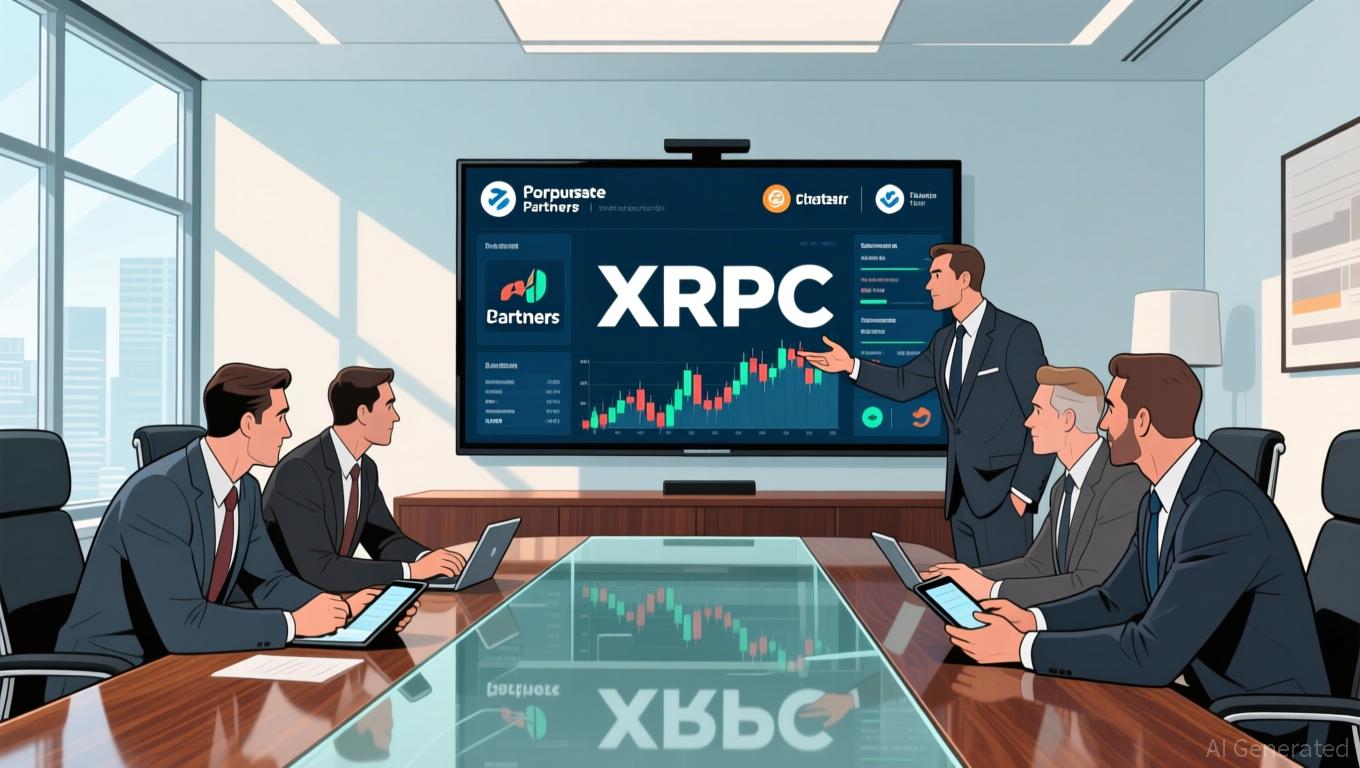Modern Monetary Theory and the Transformation of Crypto Valuations: Institutional Integration and Policy-Induced Drivers
- Modern Monetary Theory (MMT) is reshaping 2025 financial policies as central banks use it to manage post-pandemic economies, contrasting with crypto's decentralized ethos. - Crypto valuations now depend on regulatory alignment and institutional adoption, with 55% of hedge funds holding digital assets due to clearer U.S. regulations. - Central banks experiment with tokenized reserves while BIS demands stricter stablecoin governance, shifting focus from speculation to policy-driven stability. - A potential
MMT and the Crypto Paradox
The main principle of MMT—that governments issuing their own currency can spend without immediate fiscal limits—has gained momentum as central banks implement broad fiscal measures to control inflation and manage liquidity, as highlighted in a
The instability of algorithmic stablecoins like USDsd between 2023 and 2025 exposed significant governance issues, leading the Bank for International Settlements (BIS) to call for tighter regulations based on the "three pillars" of robust monetary systems: unity, adaptability, and reliability, as mentioned in the

Institutional Adoption: A New Era of Compliance
There has been a notable increase in institutional participation in cryptocurrencies, propelled by a more favorable regulatory climate. A 2025 study by the Alternative Investment Management Association (AIMA) and PwC found that 55% of traditional hedge funds now have digital asset exposure, up from 47% in 2024, as stated in a
Nearly half of these funds point to U.S. regulatory progress as a major reason for expanding their crypto investments. This trend goes beyond speculation: tokenization is becoming more popular, with 52% of hedge funds interested in tokenized fund structures for managing liquidity and collateral, according to the
The Federal Reserve’s adoption of MMT-inspired strategies, such as large-scale government spending to control inflation, indirectly impacts crypto prices by changing how attractive digital assets are compared to traditional safe investments, as noted in the
Still, obstacles remain. For example, Microsoft’s shareholders recently voted against a proposal to add Bitcoin to the company’s balance sheet, as covered in a
Policy-Driven Catalysts and the Future of Money
The U.S. government’s consideration of establishing a Strategic Bitcoin Reserve (SBR) could further shake up the market. Analysts such as Jack Mallers have suggested that a Trump administration might move to recognize Bitcoin as a reserve asset early in its term, as discussed in a
Such a policy would be consistent with MMT’s focus on government-led fiscal flexibility, providing a state-backed alternative to private stablecoins and strengthening institutional trust in digital assets.
However, the future remains uncertain and complex. As MMT expert William Mitchell observes, "Striking a balance between government involvement and technological progress will determine the future of money," according to the
Conclusion
The convergence of MMT and the cryptocurrency sector in 2025 highlights the ongoing evolution of global finance. As central banks and regulators reshape monetary frameworks, institutional investors are adjusting their strategies to succeed in an environment where regulatory compliance and stability are prioritized over pure speculation. For digital assets to prosper, they must evolve to meet these new demands, where policy changes and institutional participation are just as vital as technological breakthroughs.
Disclaimer: The content of this article solely reflects the author's opinion and does not represent the platform in any capacity. This article is not intended to serve as a reference for making investment decisions.
You may also like
Cardano News Update: Cardano Faces Death Cross Challenge—Will ADA Withstand the $0.50 Plunge?
- Cardano (ADA) forms a bearish death cross as price nears $0.50, with analysts warning of potential 50% declines if key support fails. - Whale selling and fear index at 31/100 highlight panic, while SEC delays on ETFs and low DeFi activity worsen investor uncertainty. - Emurgo partners with Wirex to launch ADA Visa card, aiming to boost utility but lagging behind Ethereum/Solana in DeFi adoption. - Upcoming Leios/Midnight upgrades promise 30-50x throughput gains, yet skeptics cite founder Charles Hoskinso
Hyperliquid News Today: Hyperliquid's $4.9 Million Loss Highlights DeFi's Ongoing Challenges with Risk Management
- Hyperliquid paused its Arbitrum bridge after a $4.9M loss from a POPCAT meme coin price manipulation scheme, as reported by Coinotag. - A trader used $3M in stablecoins to artificially inflate POPCAT's price, triggering liquidations and exposing DeFi's risks in volatile assets. - The incident mirrors a 2025 JELLYJELLY manipulation case, with experts criticizing Hyperliquid's immaturity in balancing decentralization and risk controls. - Analysts urge stronger safeguards for community-funded pools, as plat

Yahoo Equips Investors with a Glimpse into the Future: Prediction Markets Enter the Mainstream
- Yahoo Finance partners exclusively with Polymarket to integrate blockchain-based prediction market data into its financial services , effective November 12, 2025. - The collaboration leverages Polymarket's USDC-powered platform for real-time event forecasting, enhancing market sentiment analysis for retail and institutional investors. - Growing industry adoption of prediction markets is evident as Google and Hollywood.com also enter the space, while regulatory scrutiny intensifies with CFTC involvement.
XRP News Today: XRP ETF Establishes a Regulated Route for Widespread Crypto Adoption
- Canary Capital's XRPC ETF becomes first U.S. spot XRP fund under securities law, clearing SEC approval via Form 8-A on November 10, 2025. - Charging 0.50% fees with U.S. Bank/Gemini custodians, the ETF offers direct XRP exposure unlike offshore-linked predecessors, reducing counterparty risks. - XRP surged 10% pre-approval as whales withdrew 10M tokens, while analysts predict $2.70–$3.00 price targets if institutional inflows persist post-launch. - Despite SEC's $125M fine against Ripple, the ETF's regul
